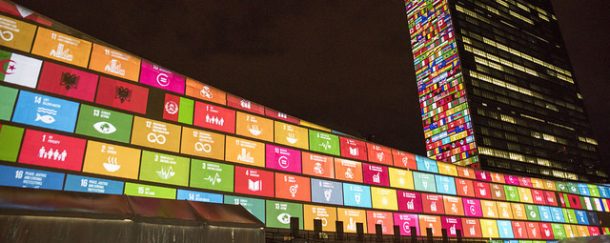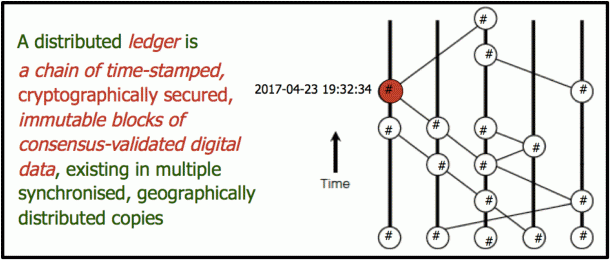Blog
SDG ←→ LCA
October 30, 2017 by Bo Weidema
Since the UN Sustainable Development Goals (SDG) were published 2 years ago, much has been said on the difficulty in implementing them into business practice. Part of the difficulty comes from the wordings, which often appear better suited for governmental use than specifically for use in a business context. But the main difficulty comes from the sheer number of goals (17) and accompanying targets (169) and indicators (so far 230). While this should provide something for everyone, it also implies an obvious risk of cherry-picking and sub-optimised decision-making. These problems have been pointed out very eloquently by other bloggers, e.g. Nienke Palstra & Ruth Fuller from Bond.
The Business and Sustainable Development Commission have done a great job in pointing out the positive market opportunities that the SDGs open up for first-movers, and the UN Global Compact and the Global Reporting Initiative (GRI) have teamed up in an action platform to provide best practices for corporate reporting on the SDGs, with a first analysis report published last month and a “Practical Guide for Defining Priorities and Reporting” announced for January 2018.
So what can we add from an LCA perspective that has not already been said and is not already being done? Well, what is missing in the approaches mentioned above, and which LCA has always been focused on providing, is an overall framework can avoid shifting of responsibilities and avoid sub-optimised decision-making.
Therefore, we now launch the SDG club, a new crowd-funded project to place each of the indicators for 169 targets of the 17 SDGs into a comprehensive, quantified and operational impact pathway framework, linking forward to sustainable wellbeing (utility) as a comprehensive summary (endpoint) indicator for all social, ecosystem and economic impacts. At the same time, we will link each of the indicators for 169 targets back to company specific activities and product life cycles, using a global multi-regional input-output database with environmental and socio-economic extensions. Due to the use of a single endpoint, this framework will allow to differentiate major from minor impact pathways, to quantify trade-offs and synergies, and to compare business decisions, performance and improvement options, also across industry sectors. With this project, we wish to provide an actionable and rational method for businesses and governments to integrate the SDGs into decision making and monitoring.
This new project builds on and extends the impact assessment method developed by 2.-0 LCA consultants for social footprinting, which has been successfully tested for feasibility in global supply chain contexts. For example, a recent whitepaper from Nestlé appraised our method with these words:
“The great benefit of the Social Footprint method lies in the use of widely available background information from databases to assess social impacts top-down. As opposed to many other approaches, this means that some initial data is available for practically any specific case study, drastically reducing the overall cost”
We invite everyone to join the SDG club and thereby contribute to streamline and coordinate action and increase efficiency in implementing the 2030 Agenda.

Photo credits: UN Photo/Cia Pak, 22 September 2015, United Nations, New York, Photo # 643590, licence creative commons 2.0.
See also a previous blogpost on sustainability indicators.
10 years with iLUC research
September 30, 2017 by Jannick Schmidt
This year we celebrate more than 10 years of focussed research on Land Use Change (LUC) and indirect Land Use Change (iLUC). We do this with a free webinar on iLUC modelling for up to 100 people on November 15th.
Our first publications that included land use effect were about rapeseed and palm oil, and were part of my Ph.D. thesis: Life cycle assessment of rapeseed oil and palm oil from 2007. Ten years later, we are still developing the models and improving the framework for modelling indirect land use changes in life cycle assessment (eg. Schmidt et al. 2015; De Rosa et al. 2017).
Our own efforts have been largely channelled through the iLUC initiative, aka the iLUC Club. We began this project in 2011 and today the iLUC initiative has more than 20 universities and companies as members. We are grateful for their continued support to this important work on towards consistent methodology and modelling of iLUC in life cycle assessment.
We still have a few places for the webinar if you are interested:

References
De Rosa M, Odgaard M V, Staunstrup J K, Knudsen M T, Hermansen J E (2017). Identifying Land Use and Land-Use Changes (LULUC): A Global LULUC Matrix. Environ. Sci. Technol. 51(14):7954–7962 https://lca-net.com/p/2735
Schmidt J H, Weidema B P, Brandão M (2015). A framework for modelling indirect land use changes in life cycle assessment. Journal of Cleaner Production 99:230‑238 https://lca-net.com/p/1863
Circular responsibility
August 7, 2017 by Bo Weidema
 At the core of the circular economy concept we find the closing of material cycles through recycling of by-products and wastes (what some people call the “End-of-Life”, see also my earlier blog-post). Recycling is also a topic that has been investigated widely in Life Cycle Assessment (LCA), but here it has turned out to be one of the most difficult areas in which to ensure correct information and to avoid greenwashing. Many seek to use recycling as an argument for avoiding responsibility for environmental impacts. So I thought it might be time to summarize some of the problems we have encountered in our LCA practice, and in this way also inform the circular economy discussion on how to tackle the allocation of responsibility and credits for recycling.
At the core of the circular economy concept we find the closing of material cycles through recycling of by-products and wastes (what some people call the “End-of-Life”, see also my earlier blog-post). Recycling is also a topic that has been investigated widely in Life Cycle Assessment (LCA), but here it has turned out to be one of the most difficult areas in which to ensure correct information and to avoid greenwashing. Many seek to use recycling as an argument for avoiding responsibility for environmental impacts. So I thought it might be time to summarize some of the problems we have encountered in our LCA practice, and in this way also inform the circular economy discussion on how to tackle the allocation of responsibility and credits for recycling.
In a situation where all the material for recycling is fully utilised:
- We have seen unfortunate examples where producers seek to wipe off part of their environmental impacts on a high-value by-product, using allocation methods in violation of the ISO standards on LCA, instead of taking responsibility for how their by-products are being treated. An example is where the meat industry seeks to make their meat products look better by allocating part of the meat production impacts to the leather industry – an industry that cannot influence the meat production because there is less supply of hides than what is needed to meet the demand (a situation that is observable from marginal purchasers of leather products needing to accept synthetic alternatives). Instead, meat producers with an ISO-compliant life cycle approach take responsibility for their hides, and to choose the least environmentally impacting processing route, thus stimulating improvements in the leather industry – improvements that are much more difficult for the leather industry when left alone and even burdened on top with “responsibilities” for agricultural activities over which they have no influence.
- We have seen examples where producers seek to take credit for the imaginary benefits of recycling a fully utilised waste material that would anyway have been recycled, compare their recycled products to virgin products, and spending their efforts on competing for the already fully utilised waste material. Instead, producers that follow an ISO-compliant life cycle approach take credit for the actual expected benefits that their recycling activities provide as services to the producers of the waste, and spend their efforts on competing for making the largest benefits from the recycling activity itself.
In a situation where the material for recycling is not fully utilised, i.e. where surplus materials are being disposed of in e.g. a landfill or stockpile, the options and incentives for greenwashing are smaller because here the users of the surplus materials indeed should take credit for removing materials from the landfill or stockpile, thus reducing environmental impacts. The largest errors we see are when suppliers of the surplus materials seek to take credit for the recycling benefits of that part of the material that is being utilised, when in fact the extent of this recycling is determined by the demand for the surplus material and therefore cannot be influenced by the material suppliers.
So, in conclusion, true circular responsibility is when producers take responsibility for how their by-products and wastes are treated, and avoid taking credit for non-existing recycling benefits.
What will distributed ledger technology mean for LCA?
July 25, 2017 by Bo Weidema and Manuel Klarmann, Eaternity
Distributed Ledger Technology, informally nicknamed “blockchain” or “hashgraph” depending on its core database concept, is a new decentralised digital network technology that has the power to disrupt many existing business practices, including banking, insurance, government services and trade, by radically reducing the cost of financial transactions and contract enforcement.
In this blog-post, we investigate how the Distributed Ledger Technology may disrupt the way businesses supply consumers with information on the social or ecosystem impacts of their products – information that is currently provided by eco-labels, fair trade labels and product footprint information, often – or at least ideally – based on product life cycle assessments (LCAs).
 A distributed ledger is a chain of time-stamped, cryptographically secured, immutable blocks of consensus-validated digital data, existing in multiple synchronised, geographically distributed copies. Together, these properties make the data practically impossible to tamper with. The technology was first implemented in 2009 as a core component of the crypto-currency Bitcoin.
A distributed ledger is a chain of time-stamped, cryptographically secured, immutable blocks of consensus-validated digital data, existing in multiple synchronised, geographically distributed copies. Together, these properties make the data practically impossible to tamper with. The technology was first implemented in 2009 as a core component of the crypto-currency Bitcoin.
The Distributed Ledger Technology promises solutions to a number of the current barriers to consumer influence on the sustainability of business practices:
- The difficulty for consumers to express their requirements in a simple way, without the need for all consumers to agree on exactly the same requirements.
- The cost of verifying that the producers live up to the requirements, and the risk that the verification is corrupted.
- The cost of verifying the chain of custody, so that no more certified products are sold than produced.
On the consumer side, the Distributed Ledger Technology offers so-called “smart contracts”: self-executing digital contracts verified for authenticity on the distributed ledger. This means that consumers need not agree on a specific certification scheme. One consumer may want to buy only from supply chains that adhere to a specified fair wage policy, while another consumer may be concerned only with climate-forcing emissions. Both consumers can place their demands (and their time-limited willingness to pay for each requirement) on the digital marketplace in the form of a “smart contract”, promising to release their (premium) payment as soon as a verified supplier has been found. In this way, consumers can make requirements even if there is no current supply chain that fulfils these requirements. In fact, the consumer demands do not even need to be linked to product purchases, but may be seen as separately purchased services. In this way, consumers do not need to look for the certification of every separate product they purchase, but can once and for all (or for example, once a year) decide what demands they want to place on their suppliers and how much they are willing to pay in premium price for each of their requirements. Software apps can help the consumers make informed choices about (adjustments to) their purchasing profile.
For verification, Distributed Ledger Technology can replace costly and corruptible auditors by a crowd-based reporting mechanism, as already implemented in prediction market schemes, where verification is converted into a digital asset. The reputation of verifiers is a valuable resource that it takes time and good behaviour to build up, and which it is therefore very costly for a verifier to loose. Any attempt to influence the verification outcomes can furthermore be revealed and intercepted by an economically incentivized whistleblower function. Such decentralised verification does not need to be 100% accurate, as long as the likelihood of being caught lying is high enough and the punishment is expensive enough to discourage the bad behaviour. The higher the desired accuracy, the more costly the verification scheme, but it will still be much less costly than e.g. a physical audit scheme based on accredited accountants or similar schemes that are currently used to verify the integrity of e.g. ecological farming practices. We still need to develop the coarse global reporting mechanisms of the emerging prediction markets into a more granular community-controlled approach that can draw both on expert-knowledge (like Max Havelaar) or people who are just at the right spot (e.g. neighbours to the producers).
It is possible to place requirements on every step in the supply chain. It is relevant to do so, not only to guarantee the chain of custody (ensuring that the amount of certified products sold do not exceed those bought), but also because every step has its own emissions and its own employees. While the behaviour of every supplier needs to be verified by the above procedure of “smart contracts” verified by distributed betting, the distributed ledger ensures the traceability of certified inputs and outputs. With Distributed Ledger Technology, the chain of custody can be ensured without the need for expensive and corruptible paper trails and physical audits. Schemes for authentication of supply chains have already been launched, e.g. by Everledger for diamonds, or more generally by www.provenance.org.
If the consumers are not concerned with the specific origin of each specific product, but only with the overall amount of required behaviour (for example that a fair wage has been paid to the farmer of 10 kg coffee somewhere, rather than that coffee that I buy has been grown by this specific farmer), then the system could be simplified, since the chain of custody would not be needed. It is enough to ensure that there is some enterprise somewhere that has fulfilled the certification requirement for the amount of product or service purchased. For this purpose, there are already nascent initiatives, see e.g. https://medium.com/giveth.
In conclusion, the Distributed Ledger Technology is likely to bring increased quality, credibility and ease of use to sustainability information on products, radically changing the role of formal LCAs in providing this information. From a sustainable development perspective, the largest challenge may be that the new technology does not in itself exclude “greenwashing” – situations as known from some current environmental product declarations where a beneficial location, past good behaviour, or the past efforts of others, are used to market a product as superior, without any guarantees that improvements will be made as a consequence of the purchase. So LCA, which focuses on the consequences of (purchase) decisions, may continue to have an important role to play in educating consumers to know what to look for in a smart contract to ensure that their purchase will lead to actual improvements.